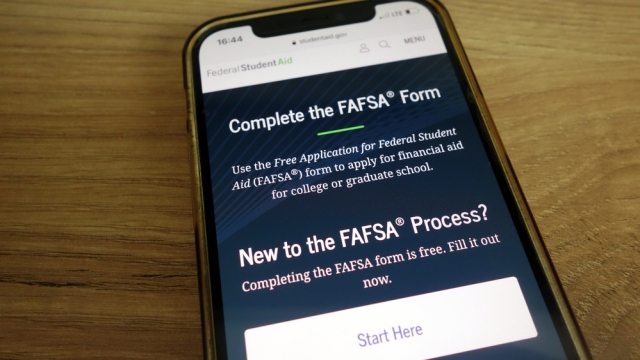As federal student loan borrowers prepare for repayments to begin after a three-and-a-half-year hiatus, the federal government has launched a websitefor borrowers to begin applying for income-driven repayment plans.
Interest on student loan payments begins in September with payments expected to resume in October, but many might find their payments to be lower than prior to the pandemic.
The website was scheduled to launch Aug. 1, but was up a day early. The website automatically imports income information from the Internal Revenue Service. A Scripps News reporter was able to import all of the needed information within five minutes. Those who apply for income-driven repayment plans will need to have their income re-certified yearly.
The Department of Education is encouraging borrowers who might struggle with payments to explore its new income-driven repayment plans.
SEE MORE: Worry sets in as federal student loan payments are set to restart
The White House has touted the new plans as a response to its failed attempt to forgive up to $20,000 in student loan debt among low and middle-income borrowers.
The newest income-driven repayment plan implemented by the Biden administration means most borrowers will have lower monthly payments than before the pandemic.
Previously, borrowers using income-driven repayment plans on undergraduate loans were expected to pay 10% of their discretionary income. Discretionary income was previously considered any dollar made above 150% of the poverty level.
Now, borrowers with only undergraduate loans will be expected to pay 5% of their discretionary income. The amount considered discretionary income increased to 225% of the federal poverty level.
SEE MORE: Here's who qualifies for Biden's student loan forgiveness programs
Previously, a borrower with undergraduate loans with a family of four with an income of $70,000 living in the continental U.S. would have been expected to pay about $2,500 a year — or $208 a month — in payments. Under the revised plan, that person would pay about $125 a year — or just over $10 per month — in student loan payments.
Under changes made by the Biden administration, those using income-driven repayment plans could have the rest of their balance eliminated after a period of time.
Those who initially borrowed less than $22,000 will have their outstanding balance forgiven after 10 to 20 years in repayment, depending on the amount borrowed. Undergraduates who borrowed more than $22,000 can have their remaining debt erased after 20 years. Those with grad school debt would not be required to make payments after 25 years.
The plan also ensures balances won't increase as a result of unpaid interest.
While Congressional Republicans previously objected to these changes, they relented in the debt ceiling deal.
"Income-driven repayment plans usually lower your federal student loan payments. However, whenever you make lower payments or extend your repayment period, you will likely pay more in interest over time — sometimes significantly more. In addition, under current Internal Revenue Service rules, you may be required to pay income tax on any amount that's forgiven if you still have a remaining balance at the end of your repayment period," the Department of Education said.
Trending stories at Scrippsnews.com




